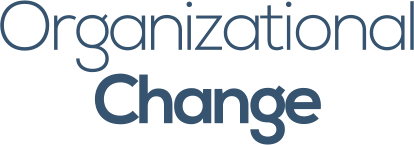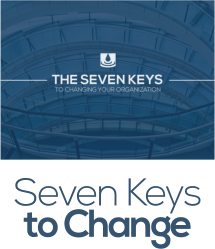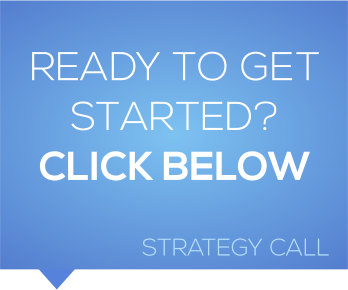


Characteristics of an Effective Organization
The ways in which an organization operates can inspire excellence and loyalty, moving individuals and teams to outperform expectations – or can be frustrating, disempowering, and disheartening.
Healthy and effective organizations share certain characteristics.
- The organization’s goals are clearly understood at all levels, and are relevant and important to the environment within which the organization operates and to its employees.
- The strategic and tactical plans for achieving those goals are well-developed, communicated clearly, adhered to, and modified when appropriate.
- The organizational structure supports the most efficient and effective use of resources, taking advantage of natural synergies.
- Employees’ roles, responsibilities, and expectations are well-defined and communicated, and employees are supported in obtaining the knowledge, skills, and personal characteristics they need to perform their roles.
- External relations with relevant groups are developed and maintained in support of the organization’s goals, growth, and vitality.
- The overall culture is consistent with the organization’s values and strategic objectives
- Leadership is dynamic, effective, and pro-active in ensuring these characteristics are met.
Most organizations are more or less successful in achieving some of these characteristics. However, few organizations fully embody them all. And when any one is seriously lacking, the others are often affected – which can impact the organization’s effectiveness and long-term viability.A team has just been assembled and wants help coalescing into a true team.
When Should You Consider an Organizational Change Effort?
An assessment and change initiative is indicated when
- There are major opportunities the organization can take advantage of
- The organization needs to undergo significant transformation, whether within its industry or field of expertise, or due to a merger, spin-off, or other major restructuring.
- There are serious issues with productivity, efficiency, or competitive advantage.
- There is a high level of employee dissatisfaction.
- Customer satisfaction levels are low, or are slipping from previous high levels.
- There is simply a strong sense that the organization can do better.
Embarking on an organizational assessment and change effort is a significant commitment for an organization, so it’s essential to create the necessary conditions for success.
What Makes an Organizational Change Effective?
An effective organizational change effort is the result of a partnership between the organization’s stakeholders and the change facilitator, leading into a substantive change initiative that creates real impact on the organization and its employees.
To be effective in its change effort, the organization must..
- Dedicate the necessary resources, including sufficient time for key members of the organization to participate fully.
- Engage members of the organization at all levels in frank, open dialogue, inspiring organization-wide participation in every aspect of the solution.
- Follow through with the long-term accountability required to make change real.
By their nature, organizational assessments and change efforts are complex, and a lot is usually at stake. Therefore, most organizations rely on an organizational change facilitator or consultant to assist with the process.
What Makes an Organizational Change Facilitator Successful?
To lead a productive, effective assessment and change initiative, a facilitator must be able to…
- Understand what makes an organization healthy, and how it can become dysfunctional.
- Develop and employ an appropriate range of tools to gather and evaluate information about the organization’s current situation.
- Gather data, including candid perspectives, from individuals and groups, eliciting trust and honesty from people at all levels within the organization.
- Communicate the assessment back to the organization with clarity and focus.
- Engage the organization in designing an appropriate process to achieve the vision, building a sense of confidence about the potential for positive change.
- Guide and support the organization as the process is implemented.
I have conducted assessments and change initiative planning for large and small organizations, addressing needs such as assimilating new senior leadership, improving customer service, organizational restructuring, and work-process redesign.
Organizational Change Clients Include…
- NYU Medical Center
- Ohio State University
- U.S. Departments of Agriculture and Energy
- Michigan Department of Agriculture
- Booz Allen Hamilton
- NASA
- Sepracor
- Glaxo-Wellcome
- Eli Lilly
- Counterpart International
- Ridge Associates
- Association of American Veterinary Medical Colleges
Daniel has an uncanny capacity to take a whole range of ideas in a room, find the common ground, and synthesize them into a theme. In a group of 400 people, he can get all the data, put it together, it shows up on the screen, and he puts out a summary of what it adds up to that’s sharp, focused, insightful, and gives people a way to move to next steps. His diagnostic capacity is magnificent. And he moves beautifully between the interpersonal, the structural, and the personal. He can work in all realms. He’s highly efficient and highly focused. And he’s highly organized and structured, so there’s always a framework, but it’s a framework that comes out of the data rather than out of his own theories. That’s what’s different about Daniel and other consultants. Others come in, they have the answer before you have the question. Daniel lets it emerge from you, the client, and then finds the right intervention that’s customized to your need.
Here at Ohio State University, I’ve had Daniel do a whole organizational development culture analysis of the veterinary medical center. It’s a very busy, difficult, and stressful workplace, with lots of faculty and several hundred staff. Daniel has that ability to pull out of people their thinking and their trust, and develop a complete analysis of the culture, what people’s desires and hopes and concerns are. Then he turned that into an intervention strategy, with work teams, follow-up and implementation. We’re working through changing the culture of this hospital, making it a better workplace, a better balance of work/family life – a more caring, nurturing, and respectful environment to work in.



